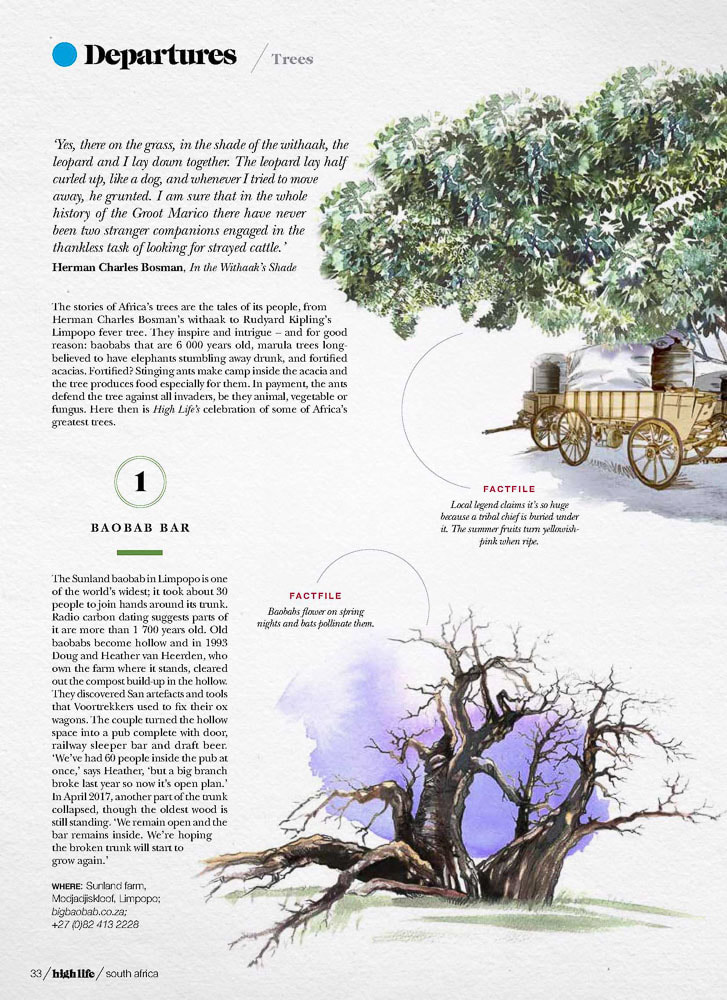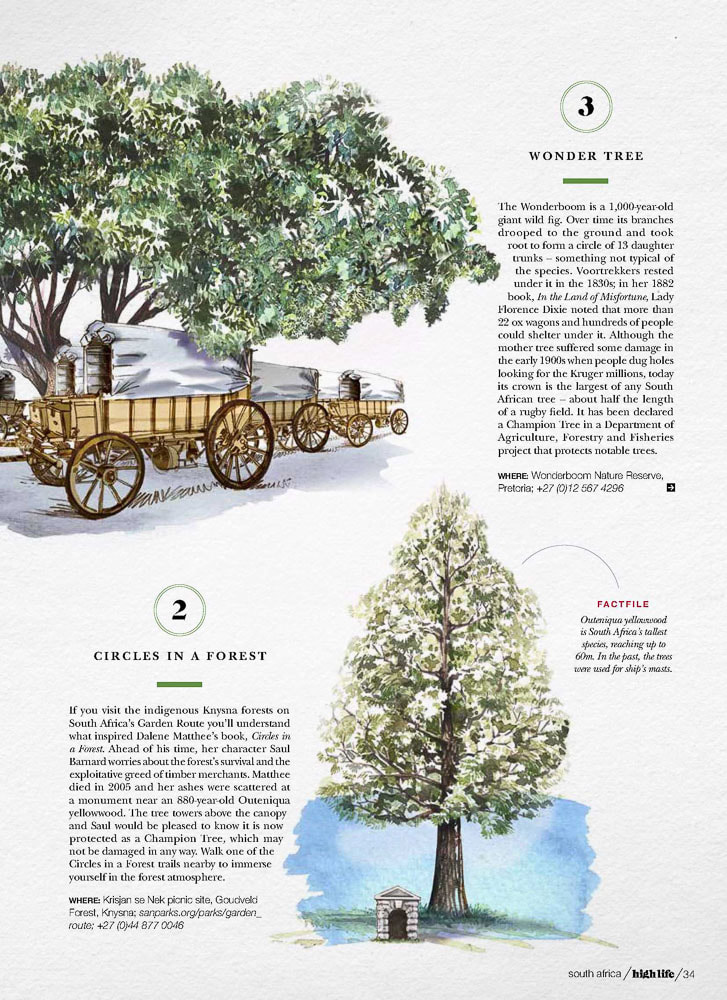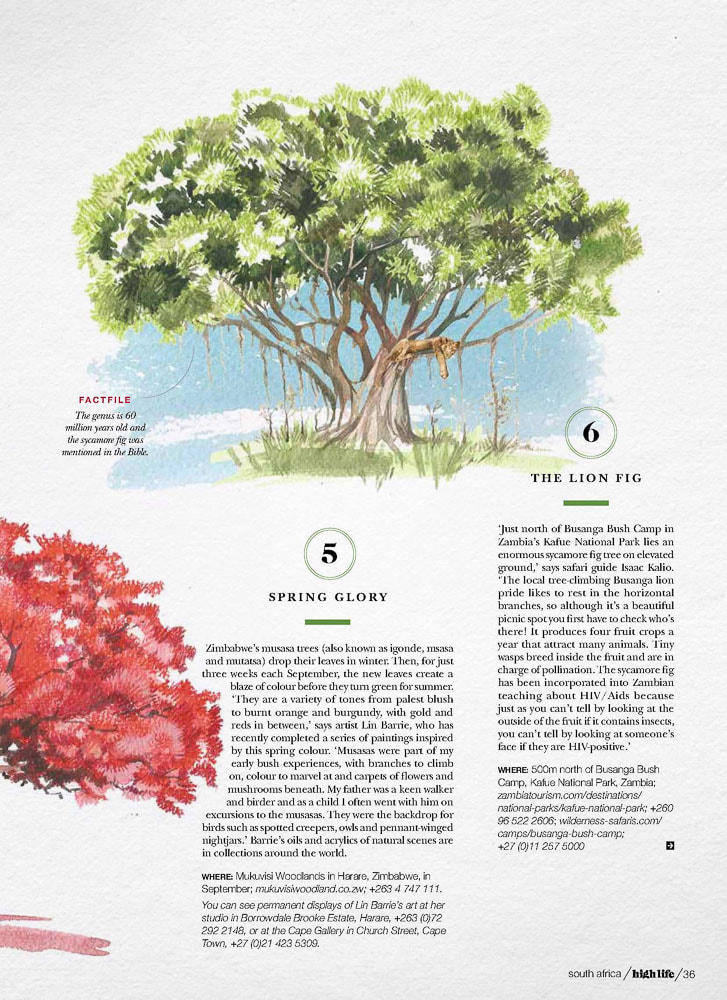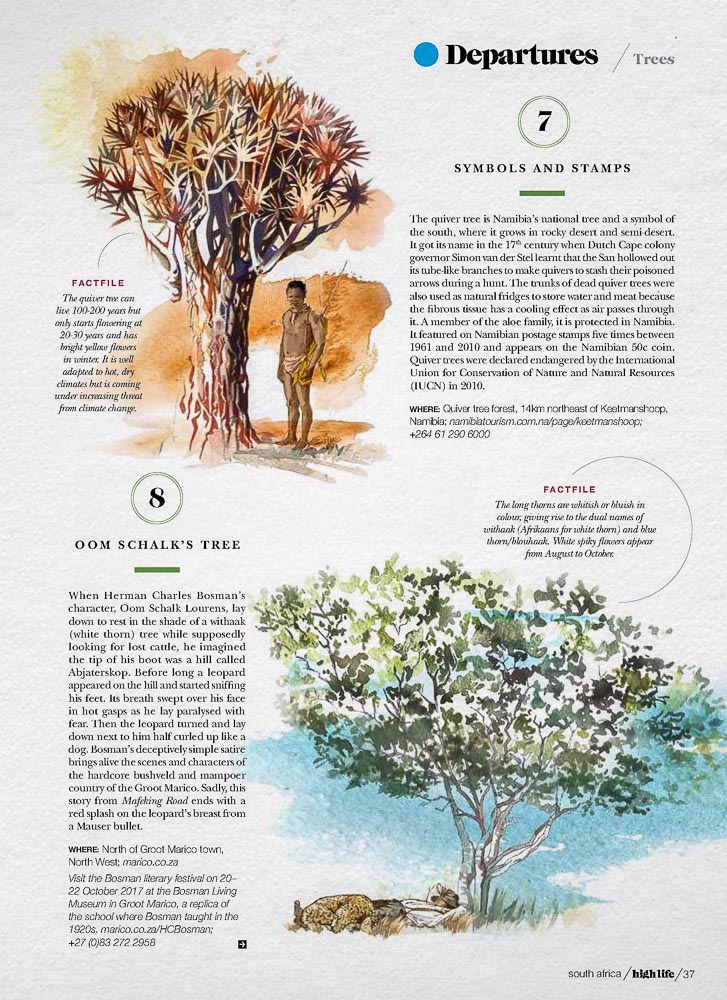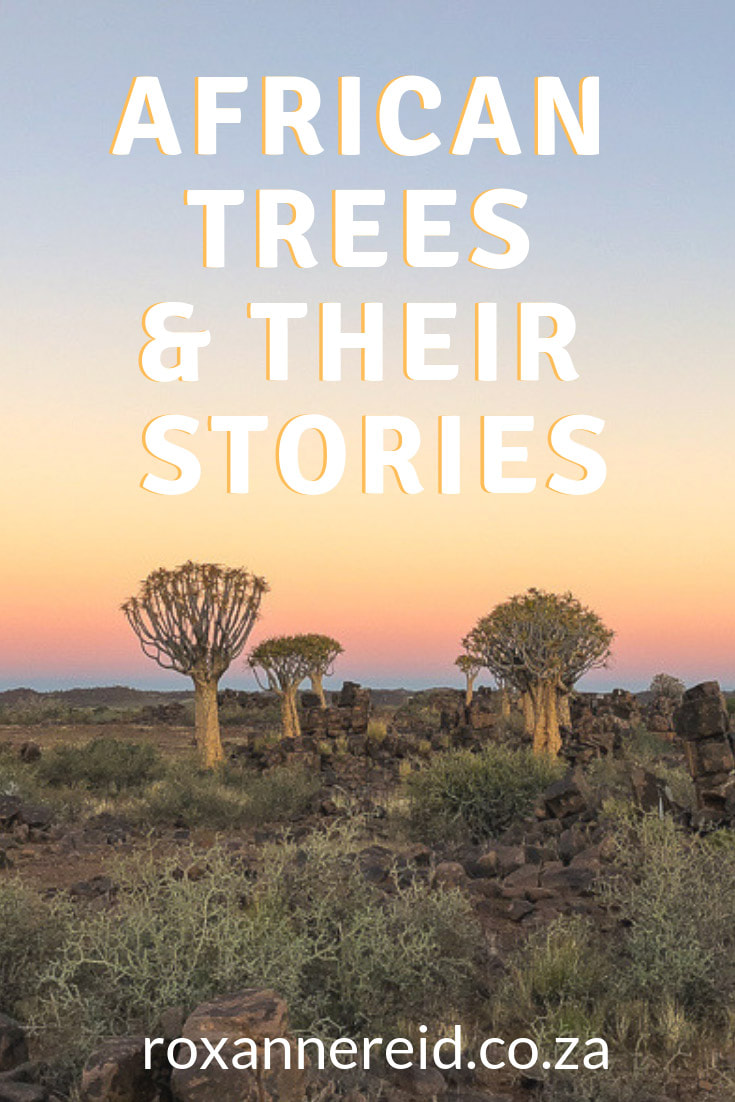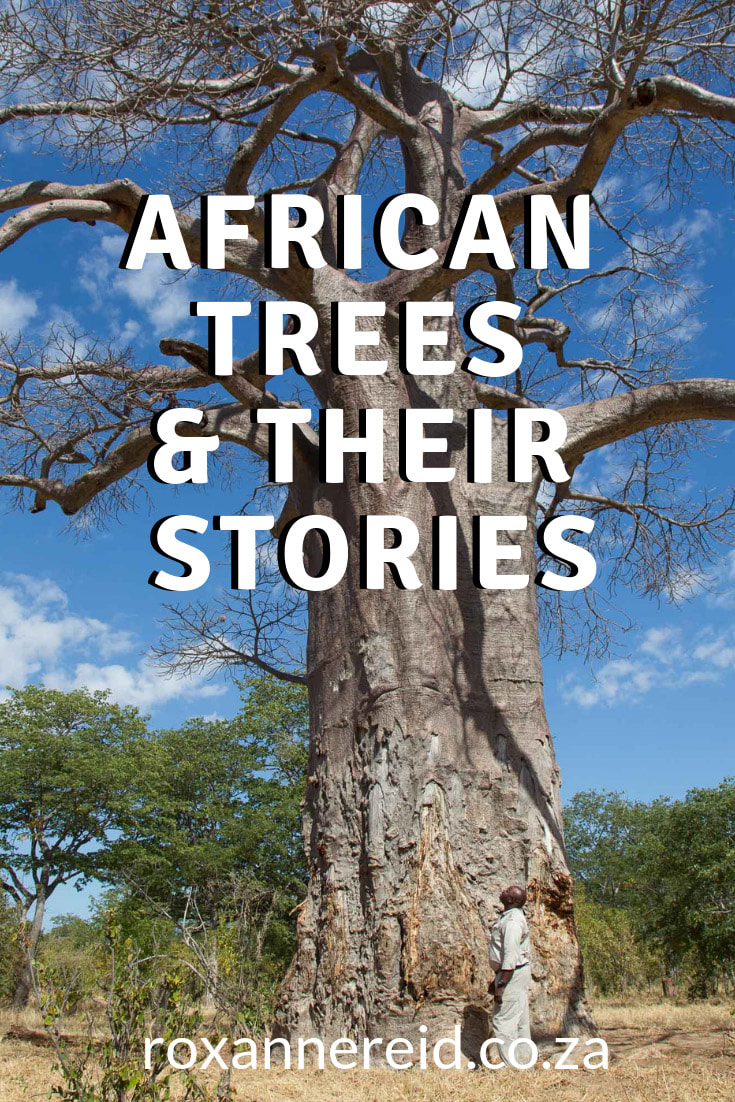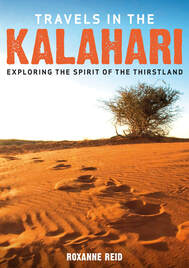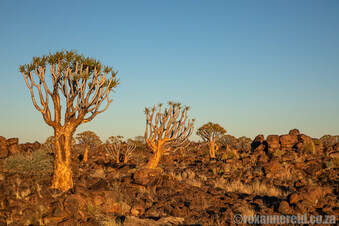
The stories of Africa’s trees are also tales of its people and animals, from Herman Charles Bosman’s withaak to Rudyard Kipling’s Limpopo fever tree. Think baobabs that are 6 000 years old or marula trees long believed to have elephants stumbling away drunk. These 10 stories about trees in Africa root out the fables, facts and fictions about some remarkable African trees.
The Sunland baobab in Limpopo is one of the world’s widest; about 30 people could join hands around its trunk. Radio carbon dating suggests parts of it are more than 1700 years old. Old baobabs become hollow and in 1993 Doug and Heather van Heerden, who own the farm where it stands, cleared out the compost build-up in the hollow. They discovered Bushman artefacts and tools that Voortrekkers used to fix their ox wagons. They turned the hollow space into a pub complete with door, railway sleeper bar and draft beer. ‘We’ve had 60 people inside the pub at once,’ says Heather, ‘but a big branch broke so now it’s open plan.’ In April 2017 another part of the trunk collapsed, though the oldest wood is still standing. ‘We’re hoping the broken trunk will start to grow again.’
Where: Sunland Farm, Modjadjiskloof, Limpopo. Sadly, as of May 2019 it is no longer open to the public.
Factfile: Baobabs flower on spring nights and bats pollinate them.
If you visit the indigenous Knysna forests on South Africa’s Garden Route you’ll understand what inspired Dalene Matthee’s book Circles in a Forest. Ahead of his time, her character Saul Barnard worries about the forest’s survival and the exploitative greed of timber merchants. Matthee died in 2005 and her ashes were scattered at a monument near an 880-year-old Outeniqua yellowwood. The tree towers above the canopy and Saul would be pleased to know it is now protected as a Champion Tree, which may not be damaged in any way. Walk one of the ‘Circles in a Forest’ trails nearby to immerse yourself in the forest atmosphere.
Where: Krisjan se Nek picnic site, Goudveld Forest, Knysna.
Factfile: Outeniqua yellowwood is South Africa’s tallest species, reaching up to 60m. In the past, the trees were used for ship’s masts.
3. Wonder tree
The Wonderboom is a 1000-year-old giant wild fig. Over time its branches drooped to the ground and took root to form a circle of 13 daughter trunks – something not typical of the species. Voortrekkers rested under it in the 1830s. In her 1882 book In the Land of Misfortune Lady Florence Dixie noted that more than 22 ox-wagons and hundreds of people could shelter under it. The mother tree suffered some damage in the early 1900s when people dug holes looking for the Kruger millions. Today its crown is the largest of any South African tree – about half the length of a rugby field. It has been declared a Champion Tree in a Department of Agriculture, Forestry & Fisheries project that protects notable trees.
Where: Wonderboom Nature Reserve, Pretoria.
Factfile: Local legend claims it’s so huge because a tribal chief is buried under it. The summer fruits turn yellowish-pink when ripe.
4. Safe house poplar
A skinny Lombardy poplar outside the safe house belonging to Ruth Fischer Rice was a beacon of hope for people on the run during apartheid. Ruth’s father, activist Bram Fischer, led the legal team that defended Nelson Mandela and his co-defendants during the 1963/4 Rivonia Trial. Although the prosecution wanted the death penalty, the team secured a sentence of life in prison. This changed the course of history, allowing Mandela to become South Africa’s first democratically elected president in 1994. ‘The people who stayed with us were mainly young men and a few young women referred to us by people we knew,’ Ruth remembers. ‘Some stayed for several months. There was surveillance but we were never raided. A storm-water drain ran from our street to the neighbouring [Johannesburg] Country Club, through which our son could lead anyone who needed to escape.’
Where: Corner of Lothbury and Fawley avenues, Auckland Park, Johannesburg.
Factfile: The poplar tree is a fast-growing alien that sends out suckers – even from the stump after it is cut down.
Zimbabwe’s musasa trees (also known as igonde, msasa and mutsatsa) drop their leaves in winter. Then, for just three weeks each September, the new leaves create a blaze of colour before they turn green for summer. ‘They are a variety of tones from palest blush to burnt orange and burgundy, with gold and reds in between,’ says artist Lin Barrie, who completed a series of paintings inspired by this spring colour. ‘Musasas were part of my early bush experiences, with branches to climb on, colour to marvel at and carpets of flowers and mushrooms beneath. My father was a keen walker and birder and as a child I often went with him on excursions to the musasas. They were the backdrop for birds like spotted creepers, owls and pennant-winged nightjars.’ Lin’s oils and acrylics of natural scenes are in collections around the world.
Where: Mukuvisi Woodlands in Harare, Zimbabwe, in September.
You can see permanent displays of Lin Barrie’s art at her studio in Borrowdale Brooke Estate, Harare, or at the Cape Gallery in Church Street, Cape Town.
Factfile: The orange caterpillars of the musasa moth appear in masses in March to feed on the trees.
6. The lion fig
‘Just north of Busanga Bush Camp in Zambia’s Kafue National Park lies an enormous sycamore fig tree on elevated ground,’ says safari guide Isaac Kalio. ‘The local tree-climbing Busanga lion pride likes to rest in the horizontal branches, so although it’s a beautiful picnic spot you first have to check who’s there! It produces four fruit crops a year that attract many animals. Tiny wasps breed inside the fruit and are in charge of pollination. The sycamore fig has been incorporated into Zambian teaching about HIV/AIDS because just as you can’t tell by looking at the outside of the fruit if it contains insects, you can’t tell by looking at someone’s face if they are HIV positive.’
This particular sycamore fig tree at Busanga fell in April 2019 after being struck by lightning. Six months later, it started to grow again from the main trunk.
Where: 500m north of Busanga Bush Camp, Kafue National Park, Zambia.
Factfile: The genus is 60 million years old and the sycamore fig was mentioned in the bible.
The quiver tree is Namibia’s national tree and a symbol of the south, where it grows in rocky areas of desert and semi-desert. It got its name in the 17th century when Dutch Cape colony governor Simon van der Stel learnt that the San hollowed out its tube-like branches to make quivers to stash their poisoned arrows during the hunt. The trunks of dead quiver trees were also used as natural fridges to store water and meat because the fibrous tissue has a cooling effect as air passes through it. A member of the aloe family, it is protected in Namibia. It featured on Namibian postage stamps five times between 1961 and 2010 and appears on the Namibian 50c coin. Quiver trees were declared endangered by the International Union for Conservation of Nature (IUCN) in 2010.
Where: Quiver tree forest 14km northeast of Keetmanshoop, Namibia.
Factfile: The quiver tree can live 100-200 years but only starts flowering at 20-30 years and has bright yellow flowers in winter. It is well adapted to hot, dry climates but coming under increasing threat from climate change.
‘Yes, there on the grass, in the shade of the withaak, the leopard and I lay down together. The leopard lay half curled up, like a dog, and whenever I tried to move away, he grunted. I am sure that in the whole history of the Groot Marico there have never been two stranger companions engaged in the thankless task of looking for strayed cattle.’
Herman Charles Bosman, In the Withaak’s Shade
When Herman Charles Bosman’s character, Oom Schalk Lourens, lay down to rest in the shade of a withaak (white thorn) tree while supposedly looking for lost cattle, he imagined the tip of his boot was a hill called Abjaterskop. Before long a leopard appeared on the hill and started sniffing his feet. Its breath swept over his face in hot gasps as he lay paralysed with fear. Then the leopard turned and lay down next to him half curled up like a dog. Bosman’s deceptively simple satire brings alive the scenes and characters of the hardcore bushveld and mampoer country of the Groot Marico. Sadly, this story from Mafeking Road ends with a red splash on the leopard’s breast from a Mauser bullet.
Where: North of Groot-Marico town, North West.
Visit the Bosman literary festival each October at the Bosman Living Museum in Groot-Marico, a replica of the school where Bosman taught in the 1920s.
Factfile: The long thorns are whitish or bluish in colour, giving rise to the dual names of withaak (Afrikaans for white thorn) and blue thorn/blouhaak. White spiky flowers appear from August to October.
The most noticeable thing about the sausage tree is its sausage-shaped fruit, which can grow as long as your arm and weigh up to 10kg. ‘In some parts of Africa, people use the fruits to enlarge their manhood,’ says safari guide Livingstone Sana. ‘With the instruction of a traditional healer, a boy climbs up the tree and chooses a young fruit. He cuts a round hole in it to mark his size then leaves the fruit to grow. When it gets to the right size he climbs the tree again and cuts the fruit down without touching it so that it doesn’t continue growing too big.’
Where: Just north of Little Makolololo Camp, Hwange National Park, Zimbabwe.
Factfile: The flowers, which open at night, have an unpleasant smell that attracts bats to pollinate them.
10. The tree of life
The marula is called the tree of life for its many uses from food to medicine. ‘It’s a photographer’s best friend in summer when leopards climb it for shade,’ says Londolozi ranger Alistair Smith. ‘The growth structure provides comfortable platforms for them to rest. Other animals almost guaranteed to be near a summer-fruiting marula are elephants. Once they’ve eaten the fruit off the ground they often shake the tree so more crashes down.’ He adds, ‘Male and female parts are on different trees so Shangaan people believe a pregnant woman who wants a daughter should drink tea made from the bark of a female tree; for a son, she drinks tea made from the male tree.’
Where: Londolozi in the Sabi Sands Game Reserve, Mpumalanga.
Factfile: The green African moon moth breeds on the tree. The fruit is made into beer and the ever-popular Amarula liqueur. That the fruit makes elephants drunk is a myth.
Note: This article first appeared in British Airways’ High Life magazine with wonderful watercolour illustrations by Hazel Buchan.
Like it? Pin this image!
Magical treehouse in the Baviaanskloof
Voices of Botswana: the tree man of Ngoma
Copyright © Roxanne Reid - No words or photographs on this site may be used without permission from roxannereid.co.za

